Case Studies.
Add Case Study
Our Case Study database tracks 22,657 case studies in the global enterprise technology ecosystem.
Filters allow you to explore case studies quickly and efficiently.
Download Excel
Filters
-
(6,653)
- (2,601)
- (2,127)
- (945)
- View all
-
(5,642)
- (2,469)
- (1,692)
- (826)
- View all
-
(5,571)
- (2,178)
- (1,766)
- (643)
- View all
-
(5,247)
- (2,179)
- (1,715)
- (1,321)
- View all
-
(2,881)
- (1,448)
- (574)
- (376)
- View all
- View all 15 Technologies
- (1,985)
- (1,985)
- (1,915)
- (1,679)
- (1,629)
- View all 42 Industries
- (8,728)
- (4,742)
- (3,618)
- (3,233)
- (2,947)
- View all 13 Functional Areas
- (3,304)
- (2,787)
- (2,603)
- (2,006)
- (1,630)
- View all 129 Use Cases
- (13,581)
- (5,296)
- (4,272)
- (3,520)
- (2,856)
- View all 9 Services
- (504)
- (432)
- (416)
- (382)
- (301)
- View all 1083 Suppliers
Selected Filters
_18.jpg)
|
Techedge's Digital Transformation with VMware Tanzu and Dell EMC VxRail
Techedge, a company that aids organizations in accelerating their digital transformation, was facing a challenge with its Kubernetes-based services and solutions. The use of public cloud platforms, while initially beneficial, was proving to be costly and barely scalable when operating on a large scale. As their new line of business began to grow, it became necessary to move from the public cloud to a larger platform with more containers. This new platform required special customization, not just for the apps but also for the container-based model in general, in terms of both security and optimization settings, and customer preferences. This level of customization was not possible in the public cloud.
|
|
|
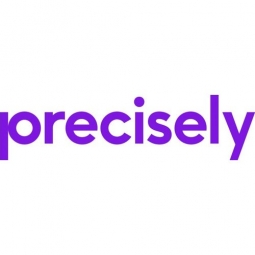
|
Eastridge Workforce Solutions: Ensuring Uninterrupted Workforce Management Services
Eastridge Workforce Solutions, a provider of workforce management services and technologies to over 1,300 clients across North America, faced a critical challenge with its time and attendance system. This system, which processes transactions from thousands of people 24/7, 365 days a year, verifies employee attendance and records their time to generate accurate payrolls. Any downtime in this system would be catastrophic, causing significant disruption to Eastridge and its clients. The company needed a high availability/disaster recovery (HA/DR) solution that would ensure the system and its associated data would always be available, regardless of any potential disasters or scheduled maintenance. However, HA/DR was not a core competency for Eastridge, and the company did not want to distract its IT group from its primary business objectives.
|
|
|
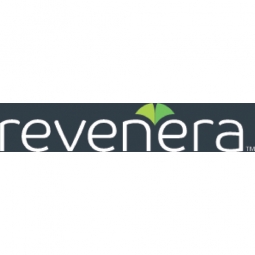
|
Siemens Building Technologies: Streamlining Software Monetization and Licensing
Siemens Building Technologies Division, a global leader in creating safe, energy-efficient, and environment-friendly buildings and infrastructures, was facing a challenge to make software a more integral part of their business. They were looking to create new revenue streams, improve visibility and reporting, and standardize their licensing technology. The company's buildings are comprised of sophisticated systems controlling everything from HVAC to security and fire protection. As every building is unique, so are the systems that orchestrate these functions. This led Siemens to search for a standardized licensing technology that would enable them to monetize all software and improve the licensing and order process, as well as the customer experience.
|
|
|
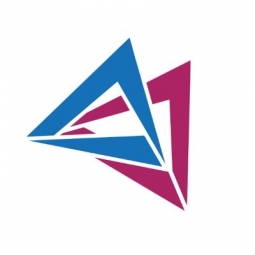
|
Smart Lighting Solutions for Energy-Efficient and Healthier Environment
The customer, a leading American manufacturer of connectivity solutions, wanted to expand their business to the enterprise segment by launching a unique smart modular lighting solution for interconnected commercial spaces such as modern workplaces, data centers, educational institutions, and healthcare facilities. They also needed a solution to lower the energy consumption of their existing IT infrastructure thereby reducing operational costs. The customer was looking for a comprehensive smart lighting solution with faster connectivity, interoperability, and high energy efficiency. The challenge was to develop a solution that could integrate with the existing infrastructure, provide in-depth analytics, and offer a user-friendly interface.
|
|
|
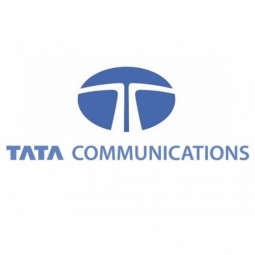
|
Mission-Critical Manufacturing Apps From Infor® Hosted By Tata Communications: A Case Study
Infor, a company that builds business software for specific industries in the cloud, faced a significant challenge. With a workforce of 16,000 employees and over 90,000 customers spread across more than 170 countries, Infor's software is designed for progress. However, its business model, which involved licensing state-of-the-art software applications to run on customers’ own IT infrastructures, was proving to be a hurdle. One of their customers, Tal Apparel, was using legacy in-house IBM AS/400 computer systems. These systems were strained beyond their capabilities and were unable to run the newer Infor software. This situation posed a significant challenge for Infor, as it was hindering the progress and efficiency of their software deployment.
|
|
|
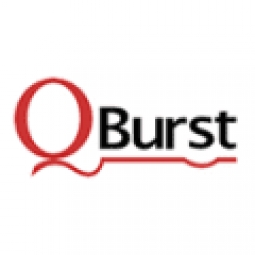
|
IoT Testing for Home Automation: A Case Study
The client, a leading consumer products company and a member of the Russell 1000 Index, was an emerging player in the home automation space. They offered electronic keyless entry locks for residential use, with home automation applications that enabled users to control lighting and security systems. The challenge was to ensure that the hardware and software of these IoT products worked seamlessly, with the security and performance of the IoT environment guaranteed. The client wanted to ensure that new features in the home automation platform were thoroughly tested before launch. This included QA for Wi-Fi door locks (software and firmware), interoperability testing, multi-country (localization) testing, automation of the Regression Suite (web/mobile/API), and performance and security auditing. The multiple scenarios that needed to be tested and the frequency of releases necessitated a move towards test automation.
|
|
|
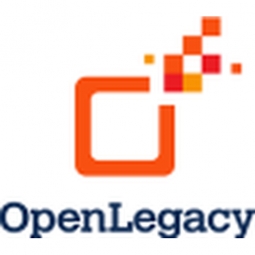
|
Autogrill's Supply Chain Enhancement through IoT Connectivity and Visibility
Autogrill, a multinational catering company operating in 30 countries, faced a significant challenge in providing their suppliers with direct access to their core system data. The suppliers required this access for improved visibility, analytics, and order effectiveness. Autogrill also needed better anticipation of stock levels, localized costs in each market, and additional supply chain information. The data resided in their IBM i (AS/400) and SAP systems, and accessing it in a quick, secure, and cost-effective manner without creating thousands of queries was a significant challenge. Autogrill was in search of a partner who could support them in achieving these goals and provide secure services granting real-time information from their core systems.
|
|
|

|
Know Your Customer App
As “customers,” we generally provide feedback or reviews to the services, places, or goods we buy because we believe that sharing our valuable experience with others will help them choose a better option when needed.Vice versa, our Client wanted to come up with a platform where he can help all service providers to know about their customers before working or collaborating with them!
|
|
|
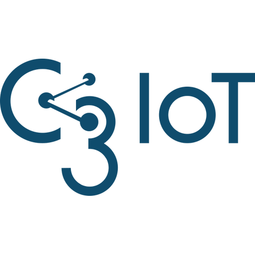
|
Dynamic Optimization of Inventory Management in Aerospace Manufacturing
A global manufacturer of aircraft engines, avionics, and other aviation products was grappling with the complexity of managing its supply chain. The company maintains 90 major product lines that require tens of thousands of parts from hundreds of manufacturers spread across the globe. The costs of maintaining inventory were significant, with just two components of its aircraft engines accounting for $600 million in parts inventory, including $400 million in fast-moving inventory. The company was seeking ways to optimize inventory levels to mitigate supplier delays and improve gross margins and revenue.
|
|
|

|
Offset Solar's Revenue Boost: A Chatbot Success Story
Offset Solar, a leading home solar installation company in the United States, was facing a challenge in speeding up their sales cycle. Despite having a contact form on their homepage that booked new sales meetings, the company wanted to explore how Chat Marketing could enhance their lead generation process. The goal was to quickly qualify visitors and convert them into leads for sales. Upon analyzing their homepage experience, they identified two major obstacles: visitors either didn't know what they wanted or didn't know how to find it. The challenge was to overcome these obstacles and create a more efficient, customer-focused lead generation strategy.
|
|
|

|
IoT-Based Energy Management: A Case Study of Bright Power and 75F
Bright Power, a nationwide leader in strategic energy solutions, was facing challenges with simultaneous heating and cooling in its New York headquarters due to uncontrolled perimeter radiation and packaged air conditioning on thermostats. The building’s system included individually-controlled thermostatic radiator valves and a packaged air-conditioning unit. This led to frequent simultaneous heating and cooling and a lack of control, resulting in energy wastage and occupant discomfort. Bright Power sought to control the space’s disparate systems with the aim to reduce energy waste, increase comfort, and evaluate how IoT-based controls can help their commercial and multifamily clients achieve the same. They also required an open-source solution that could install in tandem with Tunstall radiator products.
|
|
|
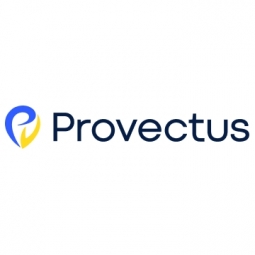
|
Blue Bottle Coffee Enhances Customer Satisfaction with AWS Cloud Migration
Blue Bottle Coffee (BBC), a global coffee roaster and retailer, was facing significant challenges with its IT infrastructure. The infrastructure was insecure and distributed among several cloud providers, lacking a DevOps approach. This situation increased the Total Cost of Ownership (TCO) and slowed down the time to market for their products. BBC aimed to assemble and optimize the disjointed IT-infrastructure elements to increase the security of the entire ecosystem. They also wanted to implement Continuous Integration/Continuous Deployment (CI/CD) pipelines to accelerate and facilitate the deployment process by eliminating manual operations. Operational inefficiencies were causing high TCO and slow Time to Market (TTM), keeping BBC’s engineering team occupied with non-strategic tasks. BBC approached Provectus to prepare their IT-infrastructure for AWS migration, optimize and enhance its deployment process, and make BBC’s entire ecosystem more secure, which would allow the company to further spur its expansion, both in the USA and abroad.
|
|
|

|
Edge AI: Deploying AI Flexibility in a Virtualized LV/ MV Substation
Cuerva a Spanish Grip Operator, was seeking to enhance grid knowledge through the implementation of the AI Energy Forecasting Model to obtain precise forecasts of user demand and energy generation.Cuerva’s grid encompasses over 16,000 diverse supply points, making cloud-based operations intricate and susceptible to issues such as connectivity loss, delays in information transmission, and reliance on centralized infrastructure, which can result in the loss of critical data.To tackle these challenges, the Edge technology has proven to be the sole alternative capable of addressing these issues effectively. It ensures real-time data access and operates in a decentralized manner, minimizing the impact of device failures on the overall functionality of the network.In this successful case, we illustrate how with Barbara DSOs can implement AI directly in substations to accurately predict the demand and production values of consumers linked to the transformation center where an Edge node run by Barbara has been deployed.
|
|
|
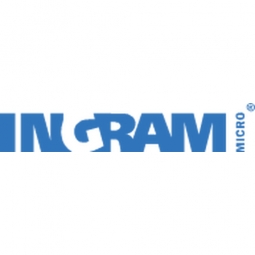
|
Ensuring the safety of Alzheimer’s and dementia patients through IoT-driven trac
Wandering is a common symptom of Alzheimer’s and dementia even at the early stages (60% of Alzheimer’s patients will wander off and become lost at some point). These diseases kill brain cells and destroy people’s memories, most notably short-term recall. Patients forget the last thing they did, so their first impulse is to stand and start moving with the intention of doing something. This is compounded by the fact that individuals with dementia are easily disoriented and become confused in crowded or unknown situations, and they have a strong tendency to want to escape.
|
|
|
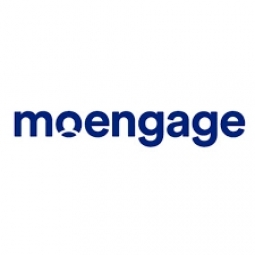
|
Increasing User Reachability & Operational Efficiency: A BigBasket Case Study
BigBasket, India's largest online food and grocery store, faced two primary challenges. The first was creating awareness about its services and offerings, a common issue for any E-commerce brand. The company needed to focus on user reachability to increase its customer base. The second challenge was to grab its customers’ attention through the right channels in a timely manner and with the most relevant content. As one of the first movers in the grocery delivery segment, standing out from the crowd was crucial for BigBasket. They needed a solution that would allow them to reach more devices with their offerings and provide a personalized customer journey.
|
|
|
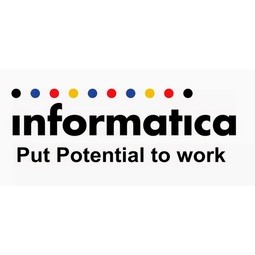
|
Transforming Complex Technology Into Extraordinary Business Performance
• Lack of complete visibility into status of individual transactions• Absence of consolidated view to manage operations and optimize use of cash reserves• Reliance on a slow, expensive, and outsourced process to develop, test, and deploy new transaction formats
|
|
|
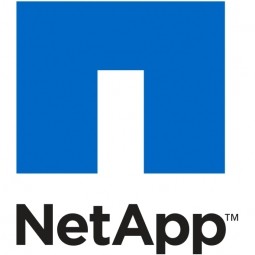
|
NetApp's Role in Powering SAP HANA Enterprise Cloud
SAP was looking to launch its HANA Enterprise Cloud (HEC), a preeminent infrastructure-as-a-service (IaaS) solution. The challenge was to find an infrastructure partner that could deliver significant improvements in processing speed, product time to market, and security that SAP customers were expecting. SAP needed a solution that would allow its customers to quickly, easily, and inexpensively run and support SAP HANA applications. Furthermore, the solution needed to be flexible enough to respond quickly to platform changes or technology innovations. SAP also wanted to streamline its customers' cloud adoption by eliminating the need for them to purchase or manage extra storage infrastructure.
|
|
|
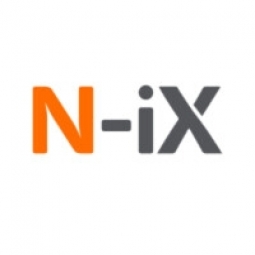
|
Long-term Software Development Partnership with Fluke Corporation: An IoT Case Study
Fluke Corporation, a US-based company that manufactures, distributes, and services electronic test tools and software for measuring and condition monitoring, was facing several challenges. The company needed to improve visibility into asset condition and ensure high performance, customization, and scalability of its solutions. They also needed to ensure seamless integration with CMMSs such as SAP, Emaint X4/X5, and IBM Maximo. The company was also looking to transform its products into multi-tenant applications, making them cloud-native, and ensuring high security for SaaS applications. Additionally, Fluke Corporation was facing challenges in establishing effective communication and cooperation with other remote teams of the client and ensuring rapid integration of Fluke products with a number of new CMMSs.
|
|
|

|
Digital Transformation of Inventory Management for UK's Leading Car Dealership
The client, a leading car dealership company in the UK, was facing challenges with their existing dealership management system. The system was outdated and inefficient, making it difficult to manage a large inventory database of over 285,000 parts. The system was also hard to handle and had inefficient reporting capabilities. It consisted of a number of websites and third-party solutions that all shared one inventory database. The client had been trying to re-develop the system for eight years with their on-site engineers and individual contractors but had not been successful. They needed a solution that would streamline their inventory management, improve the user experience of the platform, and enhance the efficiency of their business operations.
|
|
|

|
Leveraging IoT to Combat Homelessness: A Case Study on Community Technology Alliance
The U.S. Department of Housing and Urban Development (HUD) reports over half a million homeless people on the streets in the United States on any given night. The Community Technology Alliance (CTA) has been working since 1991 to collect data on homelessness and match individuals to available housing and services. However, as CTA's mission evolved, it faced the challenge of enabling housing providers and human services agencies to exchange data, eliminating the need for clients to contact multiple organizations or provide their information multiple times. CTA also aimed to help communities comply with the Homeless Emergency Assistance and Rapid Transition to Housing (HEARTH) Act of 2009, which requires a coordinated or centralized assessment and placement system to prioritize access to housing and services. Compliance is demonstrated using an Annual Performance Review (APR) that community agencies submit to HUD. Communities that don’t comply risk losing their homeless assistance grants.
|
|
|

|
Full-Scale Digital Transformation Accelerates Time-to-Market for Telecom Operator Lebara
Lebara, a rapidly growing mobile virtual network operator (MVNO) with operations in 10 European countries, was facing challenges with its legacy IT infrastructure. The company needed to undergo a comprehensive digital transformation to ensure scalability, agility, and faster time-to-market. As part of its expansion strategy, Lebara initiated a digital transformation program designed by a leading consulting agency. However, the company required assistance from an experienced software development partner for implementation. Lebara was seeking a provider that could cover all their needs in software development, including optimization of their existing BI solution and platform migration from on-premises to the cloud.
|
|
|
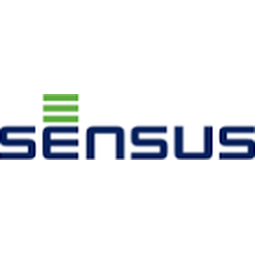
|
Central Hudson's Innovative Approach to Distributed Energy Resource Management
Central Hudson Gas & Electric Corporation, a utility company servicing a 2,600 square-mile area in New York, was facing the challenge of transitioning away from a traditional distribution model to accommodate the growing push for renewable energy. The company had a long-term vision that aligned with the state’s commitment to sustainability, but the transition was not as simple as flipping a switch. The utility company needed to ensure quality and reliability as demand evolved. The introduction of their distributed generation program, part of New York State’s energy plan, brought new possibilities and incentives to customers but also introduced a few challenges. The utility company needed to ensure they had the right level of visibility and control over their grid, especially with the introduction of Distributed Energy Resources (DERs), small-sized power generation units that attach to the grid and enable the utility to introduce renewable energy sources, such as solar power.
|
|
|
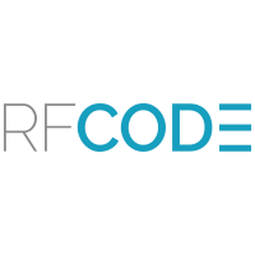
|
Real-time Environmental Monitoring Solution for DataVita
DataVita, a leading data center, faced a significant challenge in maintaining their service level agreements (SLAs) with clients. The company guarantees 100% uptime, and any drop in availability, even for a second, would result in a 25% return of a customer’s quarterly fees. To uphold this commitment, DataVita needed a cost-effective solution for rack-level temperature and humidity monitoring in their 4,000 sq. m. data center. The company sought an experienced partner to design and deploy a monitoring solution that would protect both their customers and their revenue.
|
|
|
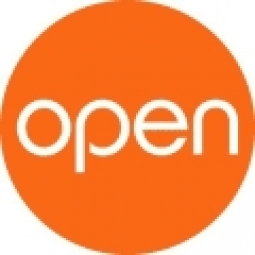
|
Invia Robotics: Future-Proofing Security with Avigilon Alta
Invia Robotics, a rapidly growing tech-savvy company, was facing a significant challenge in managing the security of their premises. With employees working round the clock and new hires being added on a weekly basis, the task of managing and issuing physical keys was becoming increasingly complex and unmanageable. The company was in dire need of an efficient access control system. However, the traditional options available in the market were outdated and did not meet their requirements. The idea of replacing physical keys with badges was not appealing to them, as it would only shift the problem from managing keys to managing badges.
|
|
|
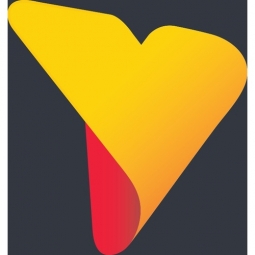
|
Auto IT Boosts BI Adoption by 40% with Yellowfin Integration
Auto IT, a leading B2B dealer management software system (DMS) company in the Australasian region, faced a significant challenge with its clients' reporting processes. Prior to adopting Yellowfin, Auto IT’s clients relied heavily on Microsoft Excel spreadsheets for reporting, a largely manual and inefficient workflow that was not mobile-friendly and lacked modern analytics features such as visualization. As an Independent Software Vendor (ISV) partner, Auto IT needed an analytics solution that could support its customers' growing analytical requirements. The inefficiencies and limitations of the existing reporting system were the primary drivers behind Auto IT's decision to seek a Business Intelligence (BI) and analytics solution.
|
|
|

|
Streamlining Production and Improving Compliance: Realtek's Journey with InstallShield
Realtek Semiconductor Corporation, a company that prides itself on excellence in all aspects of its business, was facing challenges in maintaining efficiencies across its product lines that required frequent installer updates. The company was using node-locked instances of InstallShield for software installation on its production line. However, this approach was limiting their in-house capabilities and their ability to service customers efficiently offsite. The node-locked InstallShield licenses were installed on individual computers, each license purchased at a different time and having a different version. This led to schedule impacts due to the need to sort and manage through multiple versions of installation licenses. The staff was required to perform manual verification steps during installation to ensure the production database files were synchronized and that the versions of InstallShield were aligned. Additionally, Realtek's multiple product lines necessitated the creation/update of installers for the drivers and applications more than 10 times a day across the company, leading to inefficiencies and negatively impacting Realtek’s cycle time for creation of installers and product releases.
|
|
|
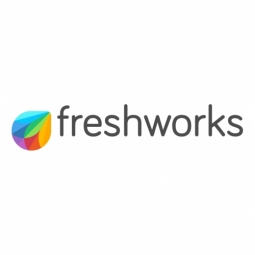
|
Cheetah Digital's Transformation: Enhancing ESM with Freshservice
Cheetah Digital, a cross-channel customer engagement solution provider, faced significant challenges in its IT operations after breaking away from Experian in 2017. The newly formed IT team was understaffed with only four agents, insufficient to meet the volume of demands. The team had previously relied on Experian’s internal tools to manage IT requests and needed a new ticketing system. The company's IT roadmap was to be cloud-first, requiring a solution that could provide continuous maturity and stability. Additionally, the IT department recognized the need for automation to scale with increasing demand. The company also faced challenges in driving user adoption of the new ITSM solution, as most IT requests initially came in through emails or walk-ups.
|
|
|

|
Elsevier's Digital Transformation: A Cloud-First Approach to IT Services & Operations
Elsevier, a global information analytics business, was facing several challenges with its IT environment. As a digital-first and data-driven business, Elsevier’s IT team was required to operate at an unparalleled scale, speed, and efficiency. However, the existing ITSM tools could not support the fast-moving, agile organization or do justice to Elsevier’s strategic investment in AWS cloud infrastructure. This resulted in a suboptimal experience, with engagement between employees and IT hindered by legacy processes, tools, and questions relating to ownership. Furthermore, with slow time-to-value and limited user efficiency, IT at Elsevier was reactive rather than proactive. To move into the next phase of growth, Elsevier launched a digital transformation initiative to move to a cloud-first approach.
|
|
|

|
Kern High School District's Journey to 100% Customer Satisfaction with Freshdesk
The Kern High School District (KHSD) in California, which comprises 18 comprehensive high schools and 11 alternative, adult, career technical, and special education institutions, was facing a significant challenge in managing its customer service operations. The district office, which began its journey with Freshworks in 2014, had over 50 agents working out of Freshdesk to support the student information system, Synergy, used by over 4000 staff across 34 education institutions. The support teams were set up across functions with separate groups of agents who tackled payroll, student systems, admin, etc. However, they realized that while it was easy for teachers to reach out to their assigned IT technician when they had an issue with their computer, not everyone knew who to reach out to if they had issues with their paycheck or leave applications. This lack of a unified system led to confusion and frustration among both the staff and the agents. The agents were unsure if the incoming requests had already been addressed by someone else, and there was no way to extract metrics and monitor the performance of agents.
|
|
|
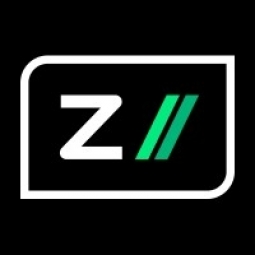
|
Quantum Chemistry Revolution: bp and Zapata's Quantum Computing Collaboration
bp, one of the world's largest energy companies, is constantly seeking innovative ways to leverage emerging technologies. One such technology is quantum computing, which has the potential to disrupt industries that rely heavily on chemistry. Quantum computing theoretically has the ability to simulate molecules and predict their properties beyond the capabilities of classical computers. It also has implications for various business operations such as logistics, manufacturing, finance, security, and more. However, the extent and timeline of this disruption remain uncertain. To better prepare for the quantum future and gain a competitive edge, bp is exploring the impact of quantum computing on chemistry calculations within and beyond their core business.
|
|




